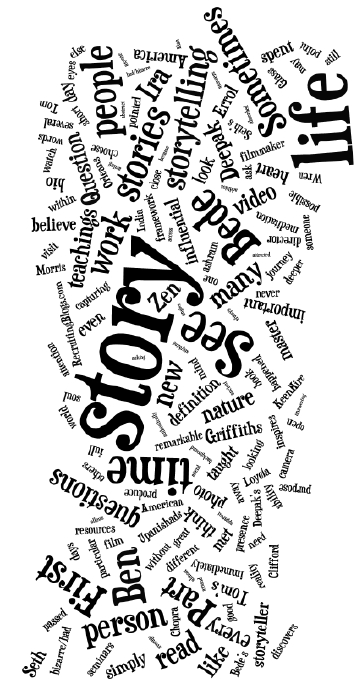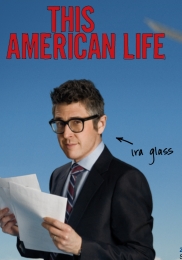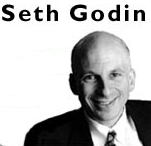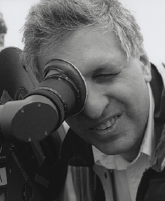Not too long ago (although I have been percolating this posting for longer than I care to admit), Reuben Steiger wrote a blog entry asking, Has the Internet Failed as a Storytelling Medium?
Steiger was trying to hire a creative director, but found that many of his candidates had “gaping holes when it comes to creating compelling narratives as opposed to beautiful websites or effective campaigns.”
Steiger then ruminated a bit on the definition of “story” and asserted that the Internet has failed to create them. He went on:
… until the net proves itself able to attract a large audience to great content built expressly for the web, advertisers will continue to be difficult to bring aboard to underwrite that content.
So where are we now? We’re at a fascinating point in history where a bold group of content creators, advertisers and digital artists are seeking the Holy Grail of online content: the ability to fund and create large-scale stories that attract and engage large audiences.
Thus, Steiger’s definition of the Holy Grail of online content. But he and others writing around the same time have different ideas on exactly what form that Holy Grail should take. Some questions arise:
- Does the Holy Grail of online content need to be some entirely new form, as yet unimagined — or at least a form that isn’t simply a case of taking some other kind of content and putting it online?
- Is the Holy Grail “transmedia” (see more below)?
- Is it distributive storytelling/narrative, distributed conversation/discussion?
- Is it “narrative as experience,” as in branding?
Steiger and others think “Transmedia Content” may be one road to the Holy Grail. He defines transmedia storytelling as “stories that are told across a broad array of media.” He offers as an example the TV show Heroes, “which in addition to its TV broadcast,” Steiger writes, “has created as many as 200 websites, most of which allow heavy fan participation and collectively reveal and advance storylines that may not appear in broadcast.
Susan Bonds, president and CEO of 42 Entertainment, and Alex Lieu, the firm’s chief creative officer of the Pasadena, CA-based marketing and entertainment firm, also talked about Transmedia Storytelling in an interview on Portfolio.com.
Citing examples of Transmedia Storytelling in 42 Entertainment’s campaigns for Nine Inch Nails, Toyota, Microsoft, and the Batman film The Dark Knight, Portfolio.com asked Bonds and Liu about their work. A sample:
Portfolio.com: How is your creative process different than the traditional advertising approach?
Alex Lieu: We always start by observing what people are doing new on the web and then we take that and think of how to build a compelling connection through stories.
Bonds says they call their form “distributive storytelling or narrative.”
Lieu notes that when users “piece a story together the depth of engagement is phenomenal. We build the audience into the content. They own it.”
Simon Kelly, writing in ADWEEK, talks about the Holy Grail in terms of branding, but seems to agree with Steiger that content is not living up to its potential. In (Author)ity: The Importance of Storytelling, he writes:
I may not be introducing a new idea here, but in today’s post-advertising world, where interruption is dead, the only way brands can connect with consumers is through useful, relevant and entertaining content — in other words, storytelling. Marketers and advertisers are beginning to get this; the problem is they’re not practicing what they preach.
Kelly cites AVENUE A | RAZORFISH’s Digital Outlook Report:
Narrative is the experience. As the Web becomes the preferred destination for brand exploration, digital experiences must become richer, deeper, and more able to tell compelling stories. If your brand experience depends entirely on pages and clicks, it’s time to wonder, ‘What is my story?’
Kelly asserts that most brands haven’t reached that Holy Grail in which narrative is the experience, but he mentions a few he feels are close:

- petcharts.com, which Kelly describes as “Purina’s brilliant new content play,” in which “Purina hits the ground running with a great story platform — connecting pets and their owners.”
- AgentProvocateur.com, which Kelly says “has brilliantly used erotic narratives to establish its brand from inception, and it clearly has an authority to publish steamy stories.”
- Toyota, “with its new serial based on a fictional assistant fashion designer, Bianca Turner.”
I didn’t look too closely, but for storytelling I don’t think AgentProvocateur.com holds a candle to petcharts.com or the Toyota one.
Writing in Post Advertising, “Gigi” agrees that brands and marketers aren’t there yet.
In The Difference Between ‘Storytelling’ and ‘Telling Stories’, she says:
Agency-types carelessly throwing around the buzzword “storytelling” and pretend that what they’re doing for their clients’ brands. But, rather than storytelling, they’re simply “telling stories.” There’s a big difference…The way I see it, storytelling involves the actual telling of a brand or product’s story; offering a legitimate storyline that falls in line with topics the brand can discuss with authority. By doing this, consumers are given the opportunity to find out more about the brand’s, well, story.
Perhaps marketers have not achieved the Holy Grail of online content. But I think perhaps we actually are there. I think Bryan Alexander and Alan Levine believe we have. If you follow storytelling or even social media, you know what I’m talking about. To be continued in a few days …
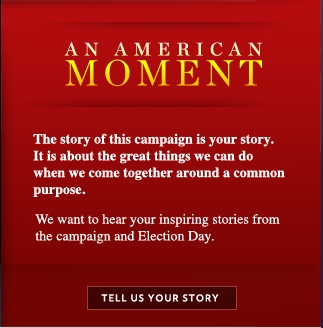 videos!) from the electorate “about what this campaign and this election means to you.” This is not your father’s presidency.
videos!) from the electorate “about what this campaign and this election means to you.” This is not your father’s presidency.



